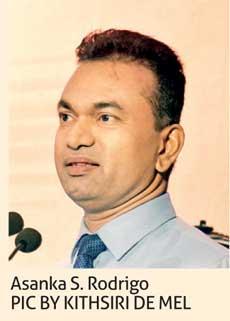Reply To:
Name - Reply Comment
By Nishel Fernando
 Sri Lanka’s solar PV sector, driven by the rooftop solar sector, is on the path to meet the 2030 climate commitments, where the country aims to meet 75 percent of the energy requirement from the renewable energy sector, according to an expert.
Sri Lanka’s solar PV sector, driven by the rooftop solar sector, is on the path to meet the 2030 climate commitments, where the country aims to meet 75 percent of the energy requirement from the renewable energy sector, according to an expert.
Prof. Asanka S. Rodrigo, the Sri Lanka Sustainable Energy Authority’s former Director General and Professor of the Electrical Engineering Department of the University of Moratuwa, outlined that the country has already achieved the 1000MW solar PV target set for 2025, under the ‘Sooriyabala Sangaramaya’ programme.
“In the post-Covid period, we have achieved something like 150MW per year; however, as of July this year, we have already achieved more than 216MW for the year. We have few more months and of course, we can go for larger capacities in the future. In order to meet the 2030 climate targets, we have to generate something like 4700MW from solar PV by 2030.
“It’s a massive target. It’s not like achieving 1000MW. We have to achieve four times of what we have achieved so far in the six-year period. However, I believe that achieving these targets is not a big deal. What we need is 500-600MW capacity additions per year,” he elaborated.
He shared these remarks delivering the keynote speech at an event held in Colombo this week, to announce the strategic partnership between Sri Lanka’s E.B Creasy Solar, the renewable energy arm of E.B Creasy and China-based SUNGROW.
Prof. Rodrigo recalled that the government’s decision to introduce net accounting and net plus schemes under the Sooriyabala Sangaramaya programme played a major role towards the current achievements in solar PV.
“With the Sooriyabala Sangaramaya programme, the government introduced net accounting and net plus. This allowed people to earn money with excess energy. Since then, there’s been a boom,” he added.
Apart from rooftop solar, he noted that several key projects in ground-mounted solar and floating sectors are also underway to contribute to the 2030 targets.
“There are even projects with about 700MW in ground-mounted solar at discussion stage. Of course, we have to go for large-scale ground-mounted projects. There are two pilot floating solar projects underway in Hambantota, each with 1MW. These are just about to commission. We have a large number of lakes, which are not utilised and even by utilising 5-10 percent of the lake water cover, we can generate a large amount of floating solar, where we can contribute to this target,” he elaborated.